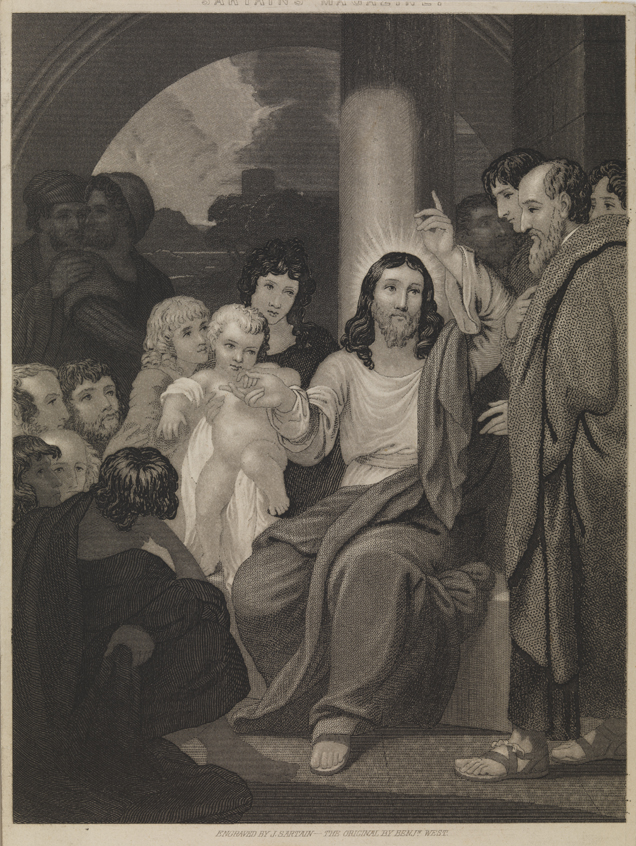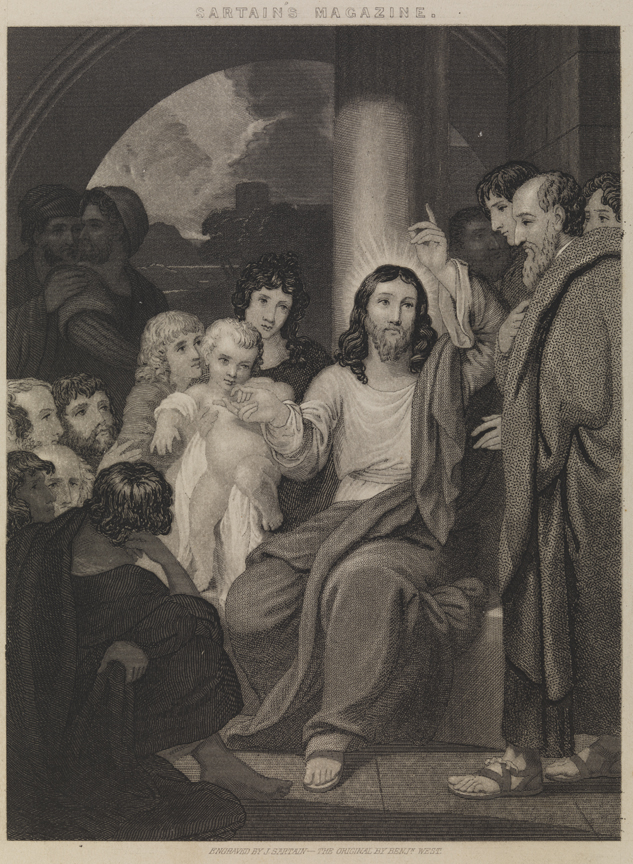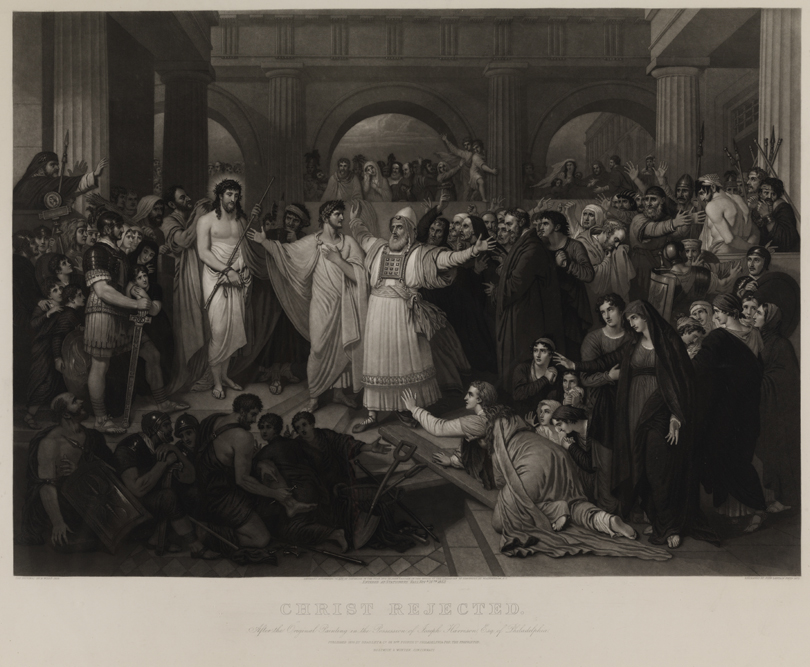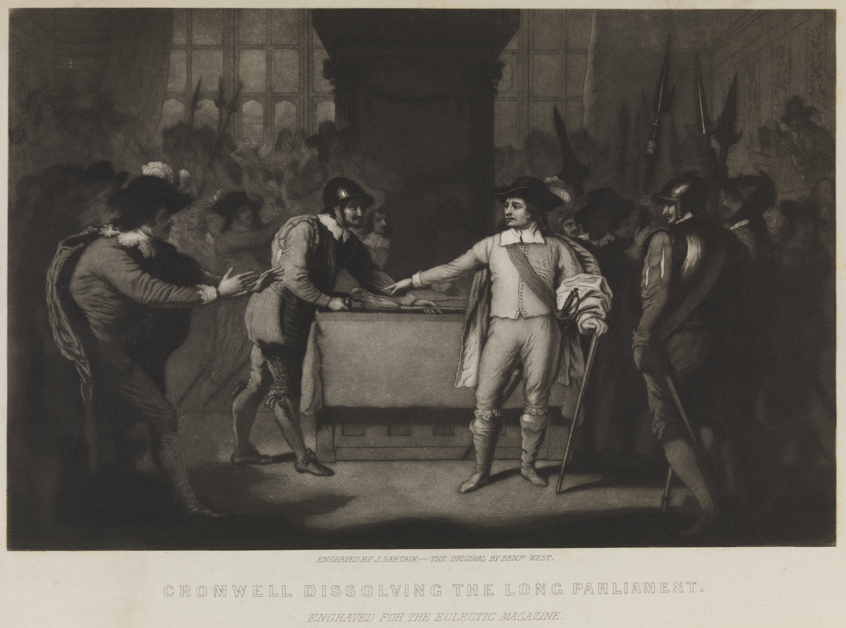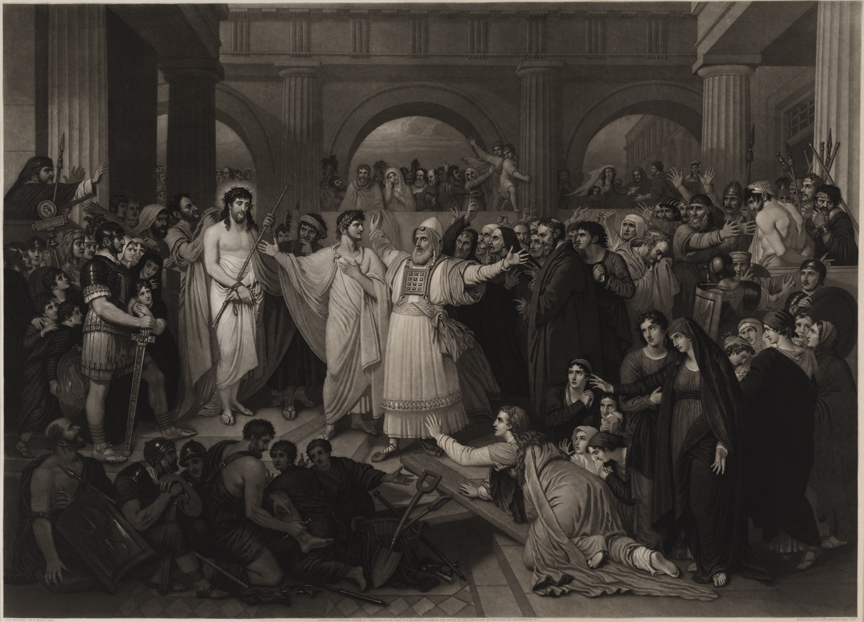
Christ Rejected
John Sartain after Benjamin West
The work of John Sartain, an engraver, painter, and designer, enjoyed high repute in the nineteenth century. His pioneering use of pictorial illustration in American periodicals changed the world of publishing. Trained in England, he arrived in the United States in 1830, already a master of mezzotint engraving. His reproductive engravings, after famous portraits or historical paintings, were extremely popular, especially with America's new middle class. Technically brilliant, they were produced as large framing prints or available in various magazines, including one owned by Sartain, who understood both popular taste and business practice. Sartain was the patriarch of one of Philadelphia's most famous and significant artistic dynasties, and also one of the Academy's most important board members. He was a major presence at several other local institutions and served as art director of the 1876 Centennial Exhibition.
"Christ Rejected," after Benjamin West's famed monumental work of 1814, also in the Academy's collection, and itself an icon of the largest and most accomplished of Sartain's engravings. Panorama-like canvases such as West's often toured the country to wide acclaim. The appearance of "Christ Rejected" at the Academy in 1862 created a 'blockbuster' event that drew large crowds. The print, capturing the painting's drama and complexity, was widely disseminated to audiences eager for an image of it.
Date of Birth
(1808-1897)/(1783-1820)
Date
1870
Medium
Mezzotint and stipple engraving on cream wove paper
Dimensions
18 x 25 in. (45.72 x 63.5 cm.)
Accession #
1984.x.340
Credit Line
Source unknown
Copyright
No known copyright restrictions
Category
Subject
More by John Sartain after Benjamin West
We're so excited you're planning to visit PAFA!
Make time for art — visit us Thursday to Sunday.
Before reserving your tickets, please review helpful information about museum hours, accessibility, building access, and special admission programs.
If you have any questions, feel free to reach out to us at visitorservices@pafa.org — we’d love to help!
